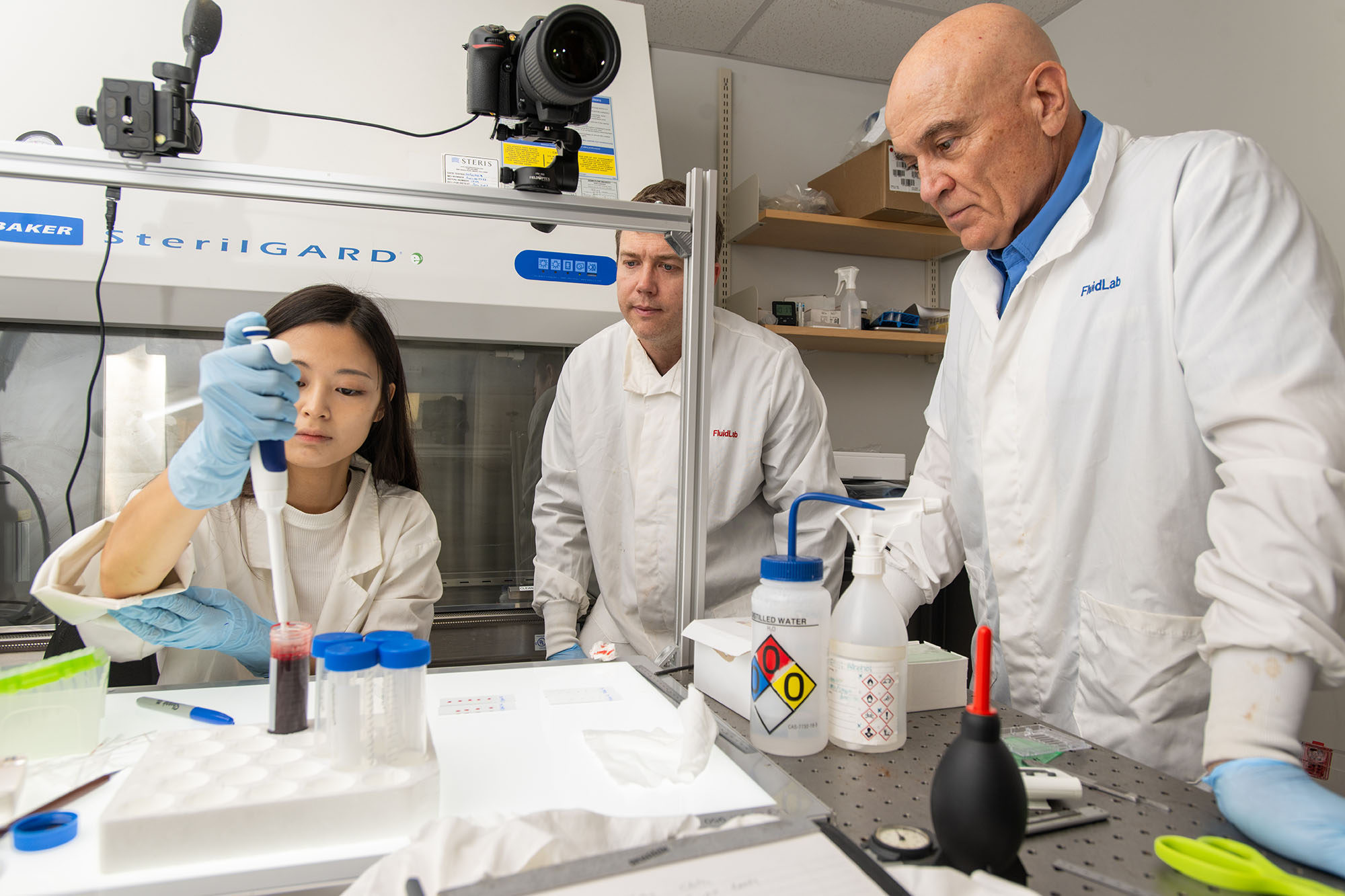Video: Updating the Science of Bloodstain Analysis and Forensics
How BU engineers are changing the way blood evidence is interpreted at crime scenes
Deep Dive Video: Updating the Science of Bloodstain Analysis and Forensics
Deep Dive Video: Updating the Science of Bloodstain Analysis and Forensics
As fans of all good cop shows know, blood evidence can help detectives crack even the toughest of cases. The century-old science of bloodstain pattern analysis—using the configuration of blood left at a crime scene to reconstruct details of the incident—is as critical to crime scene investigation as fingerprinting or DNA analysis. But it’s having to update its playbook to keep up with the technology of our everyday lives and the modern materials found at crime scenes. A century ago, blood evidence might have been found on plain wooden floors, simple textiles, or carpets; it still is today, but it’s also found on scratch-resistant cell phone screens, anti-glare windshields, and hydrophobic surfaces specifically engineered to repel fluids.
“As with any science, it’s constantly evolving,” says Kenneth Martin, a retired 33-year veteran of the Massachusetts State Police and a clinical instructor in Boston University’s Biomedical Forensic Sciences program. Martin often testifies as an expert witness in court cases that depend on blood evidence, and he is increasingly seeing crime scenes where blood has come into contact with different hydrophobic surfaces. “That has been an area where I’ve thought that we could use a lot more research,” says Martin.

Over at Boston University’s Fluid Lab, James Bird has made a career out of studying the interaction between fluids and their surroundings—and his latest research could help give forensic scientists like Martin new tools for analyzing bloodstains. Bird, a BU College of Engineering associate professor of mechanical engineering, became interested in interpreting blood evidence after attending Martin’s course. With support from a National Institute of Justice grant, his lab is doing a range of experiments designed to simulate the kinds of blood evidence found at crime scenes: everything from the complex scatter patterns associated with stab wounds to the dynamics of a single drop of human blood falling onto a surface. “A lot of the experiments people have done looking at bloodstains have been on clean surfaces,” says Bird. “Well, most surfaces aren’t clean.”
In our deep dive video, we take a seat alongside Bird and his colleagues as they study the complex interactions of human blood on different surfaces—and see how their work could shape future crime scene investigations.



Comments & Discussion
Boston University moderates comments to facilitate an informed, substantive, civil conversation. Abusive, profane, self-promotional, misleading, incoherent or off-topic comments will be rejected. Moderators are staffed during regular business hours (EST) and can only accept comments written in English. Statistics or facts must include a citation or a link to the citation.